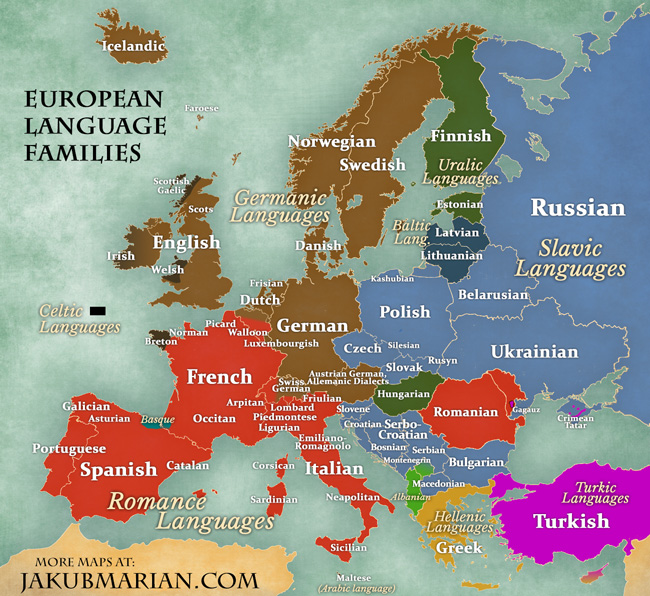The following map shows the language families present in Europe (distinguished by colour) and the major languages within those families. Some local languages with a tiny number of speakers (such as Karelian in Russia or Romansh in Switzerland) were not included, but all
languages with more than 100,000 should be present in the map, unless they are generally considered dialects of another language or not tied to a single geographic area.
Please note: Serbo-Croatian is one language from the viewpoint of linguistics, but it is politically divided into four standardized dialects: Croatian, Serbian, Bosnian, and Montenegrin. Similarly, Bulgarian and Macedonian are often not considered separate languages. Basque is not related to other European languages, and it is the last surviving pre-Indo-European language in Europe. Albanian forms its own branch of Indo-European languages. There is no consensus whether Silesian and Kashubian are dialects of Polish and Rusyn a dialect of Ukrainian or whether they are separate languages.

It is also worth noting that the term “language family” usually refers to the “top-level” families, and what the map shows are actually in many cases just “branches” of those families. Romance, Germanic, Baltic, Slavic, Hellenic, and Celtic languages all belong to the Indo-European language family. Uralic languages and Turkic languages form their own respective language families. Arabic languages belong to the Afroasiatic language family.
Note: The underlying blank map was made by Tindo and licensed from fotolia.com. If you want to share the map, please share a link to this webpage instead of sharing just the picture.

Δεν υπάρχουν σχόλια:
Δημοσίευση σχολίου